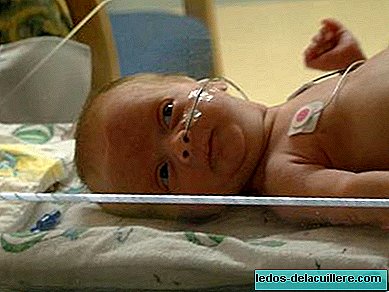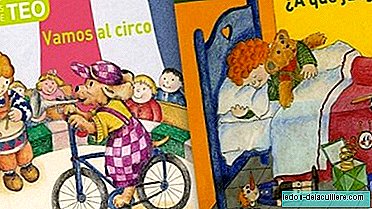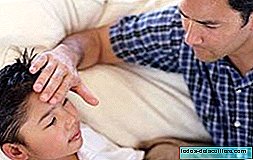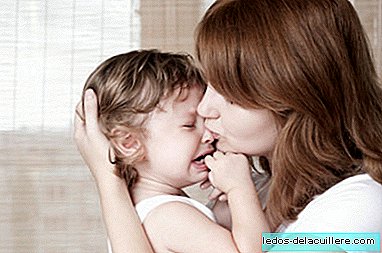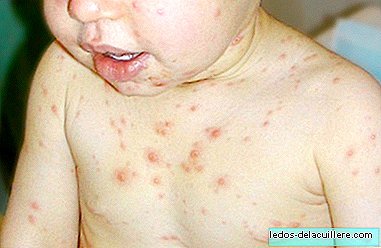
Two months ago, the AEMPS (Spanish Agency for Medicines and Health Products) stopped the distribution of Varivax chickenpox vaccine and even now parents and health professionals we wonder why. One of the reasons that has been put forward, I think not because of the AEMPS, but in some media and in discussion forums, is that the cause of the withdrawal is that it has been seen that vaccinating young children to avoid catching chickenpox it causes more incidence of herpes zoster (aka "shingles", or "pupa in the mouth").
Now I will comment on some studies that fail to clarify whether this is true or not (come on, here is a bunch of data for what) and I will focus especially on a recent one that emphasizes that the chickenpox vaccine is not to blame for the fact that the incidence of herpes zoster has increased.
But has the incidence of herpes zoster increased?
The big mess with the figures and the studies is here. Some studies say that the incidence falls, others that there is no difference and others that increases. Perhaps the difference is that not everyone talks about the same age group in the population studied. Let's see it so you know what I'm talking about.
A study conducted this year sought to know the incidence of herpes zoster in children vaccinated for chickenpox between 2005 and 2009. The sample was 322 children. Among them they saw that 82% had the chickenpox virus in their body, being 84% wild-type (the infected virus), 15% of the vaccine strain and 1% of possible wild-strain strain .
Of them 118 were vaccinated, and in them 70% chickenpox virus was detected, half of them being wild-type. That is, not all vaccinated children are found with the chickenpox virus in the body (we do not know if they had a dose or two) and many of those vaccinated have the wild virus, that is, in addition to being vaccinated they have been infected with the real virus, probably suffering few symptoms of the real disease.
As far as it went, the incidence of herpes zoster was 48 per 100,000 people a year in vaccinated children (both those who had the wild virus and those who had the vaccine strain virus) and 230 per 100,000 people a year in unvaccinated children. Concluding that Children who get vaccinated for chickenpox are less likely to get shingles.
Another study, also this year, tried to see the relationship between the chickenpox vaccine and the incidence of shingles in Finland, Italy and the United Kingdom and with the data obtained concluded that it didn't seem that vaccination could have an effect on herpes zoster rates.
A third study, conducted in 2002 in the US, with data from 1992 to 2002, showed that thanks to the chickenpox vaccine chickenpox cases had decreased, going from 2.63 cases per 1,000 inhabitants in 1992 to 0.92 cases per 1,000 inhabitants in 2002. If we talk about herpes zoster, the incidence went from 4.05 cases per 1,000 inhabitants to 3.71 per 1,000, considering that the incidence remains stable (does not decrease significantly but does not increase).
The study we are dealing with today says ...
The study we are talking about today tells us that from the universal vaccination of chickenpox in the US since 1996 the incidence of chickenpox has decreased, but a increased incidence of herpes zoster in people over 65.
Seen in this way, it does not deny what the previous commented studies say, since in one we talk about the incidence in children and in the others we talk about the general population. In this case, only the population sector of the elderly is mentioned, which could be the only one that increases in cases of herpes, while in the rest of the ages it remains stable and in the children the cases decrease.
This study has been published recently and they have tried to know if this increase in cases of herpes zoster has to do with the mass vaccination of children with chickenpox virus.
To do the study, they collected data from 2,848,765 people over 65 years of age, observing the incidence of herpes zoster between 1992 and 2010 according to age, sex, race or ethnicity, and according to the varicella vaccine coverage in the state of residence.
They saw that there were 281,317 cases of herpes, which means an increase of 39% in 18 years, going from 10 cases per 1,000 people in 1992 to 13.9 cases per 1,000 in 2010. However, and here comes the interesting thing, they saw that the incidence of herpes zoster was already increasing when the chickenpox vaccine was introduced in the vaccination calendar.
When comparing the data from 1997 to 2010, they saw that the differences were not significant and that, therefore, it could not be considered that the chickenpox vaccine was producing an increase in herpes zoster in those older than 65. In fact, the greater or lesser level of vaccine coverage in each state had no relation to the amount of cases of herpes.
And all this what is it for?
Right now for nothing, because the chickenpox vaccine is not administered in our country or subsidized by social security (yes in Madrid, Navarra and Ceuta and Melilla, at least until the end of the year) or already purchased by the parents themselves. There is no possibility of this, so this data only serves to refute the hypothesis that it is better not to vaccinate children to avoid herpes in the elderly, if this is the reason they have withdrawn the vaccine, which is not yet known.
By the way, in reference to the Varivax vaccine, a commercial for Sanofi Pasteur He told me that in January 2014 the vaccine will be available again for parents who want to buy it and can be administered. I doubt it very much, but we are waiting for new news about it.


